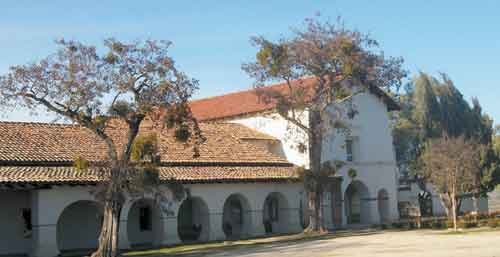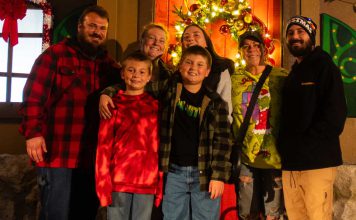Anyone who attended elementary school in California (or had
children who did) probably remembers that infamous fourth grade
project
– the mission report.
Anyone who attended elementary school in California (or had children who did) probably remembers that infamous fourth grade project – the mission report.
The state of California was a Spanish colony in the 1760s, and King Carlos III of Spain worried that the land might be claimed by Russia, which had a small trading post on the north coast at Fort Ross and already occupied Alaska. He was also suspicious of the British, who had recently won control of Canada.
The result was a decision to colonize more intensely “Alta California,” as this area north of Mexico was called. The king gave permission to the Franciscan Order to establish missions in California. Twenty one church communities were planted along “El Camino Real” (The King’s Highway), stretching from San Diego in the south to Sonoma in the north. They came to be referred to as “beads in the Franciscans’ rosary.”
The major goals of the mission system were to convert the Native Americans living in California to Christianity (specifically, Roman Catholicism) and to teach them useful trades like blacksmithing, farming and cattle-raising. Eventually the livestock and land were to be divided up among them, making them self-supporting, Christian subjects of the King of Spain
The eighteenth century did not have today’s respect for indigenous people and their cultures. Modern critics say that the Indians were mistreated by the padres and were often severely punished if they tried to escape from the mission compounds. This controversy has became more intense because of efforts to canonize (declare a saint) Junipero Serra, founder of the first nine missions. While many people consider him a holy man who saved the souls of thousands of pagan Indians, others see him as an imperialist who trampled on the rights and consciences of the original inhabitants of California.
In the 1830s, the mission system fell into decline because of events in Mexico. When that nation achieved independence from Spain, the missions were “secularized” (taken away from Church ownership). Their chapels became parish churches, and the land and other buildings were divided up among the Indians. Soon white settlers cheated them out of their land, and most of the buildings fell into decay.
Whether restored or modern replicas, missions are treasures of our state’s past. Their mission-style architecture, noted for heavy adobe walls, arcades, red tile roofs, and extensive overhangs, is still evident in many California buildings. The farming and ranching economy of California can be traced back to their influence, and they contain priceless paintings, carvings, and historic artifacts.
Originally placed about a day’s journey apart, modern transportation puts several of them within an hour’s drive from here, and Mission San Juan Bautista is located right in the South Valley community.
It was founded in June of 1797; the present church was dedicated in 1812. It is the widest of all the missions. After an early earthquake, arches separating the nave (central seating area) of the church were bricked in to provide more roof support. In 1976-77, these adobe bricks were removed and the arches strengthened to again allow three aisles.
San Juan is known as the “Mission of Music” because Padre Estevan Tapis fostered musical arts among the Indians, including a novel way of writing music that still exists in parchments displayed in the museum collection. He also secured a barrel organ that proved popular and is said to have saved the mission from attack by a band of warring Tulare warriors by enchanting them with its music.
Mission San Juan Bautista gained some fame in the 1958 Alfred Hitchcock thriller movie “Vertigo.” Location scenes were filmed at the historic plaza in front of the church. A steeple had ocne existed atop the church, but was demolished decades before following a fire. Since the movie’s plot required Kim Novak to jump from the mission’s bell tower, Hollywood added one to the building in the Paramount Pictures studio using scale models and trick photography.












